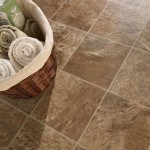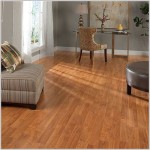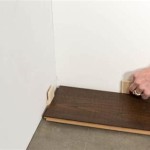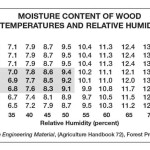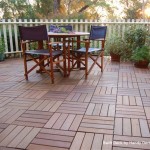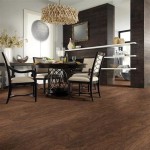Gray Slate Vinyl Flooring: A Practical and Stylish Choice
Gray slate vinyl flooring has emerged as a popular choice for homeowners and businesses seeking a durable, aesthetically pleasing, and cost-effective flooring solution. It effectively replicates the natural beauty of slate stone while offering the practical advantages of vinyl, such as water resistance, ease of maintenance, and affordability. This article explores the characteristics, benefits, installation considerations, and maintenance requirements of gray slate vinyl flooring.
Understanding the Composition and Design of Gray Slate Vinyl Flooring
Gray slate vinyl flooring is typically constructed in multiple layers. The base layer provides stability and support, often composed of fiberglass or felt. Above this lies the core layer, often made of polyvinyl chloride (PVC), which contributes to the flooring's durability and water resistance. The decorative layer is a high-resolution photographic image that realistically mimics the appearance of natural slate, capturing its unique variations in color, texture, and veining. Finally, a protective wear layer is applied to the surface to resist scratches, scuffs, and stains. The thickness of this wear layer is a critical factor in determining the flooring's overall durability and suitability for different levels of foot traffic.
The 'gray slate' designation encompasses a broad spectrum of shades and patterns. Some vinyl flooring options closely resemble natural slate, with subtle variations in color ranging from light grays to charcoal tones. Others may incorporate more pronounced veining or textured surfaces to enhance realism. Manufacturers often employ advanced printing techniques to create a visually authentic representation of slate, capturing its natural imperfections and unique characteristics. This variety allows consumers to select a flooring style that complements their existing decor and achieves their desired aesthetic.
Gray slate vinyl flooring is available in various formats, including planks, tiles, and sheets. Planks typically resemble wood flooring in their dimensions and installation method, while tiles offer a more modular design and can be arranged in different patterns. Sheet vinyl provides a seamless surface, minimizing the number of seams and offering enhanced water resistance. The choice of format depends on factors such as the size and shape of the room, the desired aesthetic, and the level of installation expertise.
The Advantages of Choosing Gray Slate Vinyl Flooring
Gray slate vinyl flooring offers a multitude of benefits compared to natural slate and other flooring options. One of the most significant advantages is its water resistance. Unlike natural slate, which is porous and susceptible to water damage, vinyl flooring is impervious to moisture, making it an ideal choice for bathrooms, kitchens, and basements where spills and humidity are common. This water resistance also makes it easier to clean and maintain, as spills can be quickly wiped away without causing lasting damage.
Durability is another key advantage of gray slate vinyl flooring. The protective wear layer safeguards the surface from scratches, scuffs, and dents, ensuring that the flooring maintains its appearance for years to come. This durability makes it suitable for high-traffic areas such as hallways, living rooms, and commercial spaces. Furthermore, vinyl flooring is often more forgiving than natural slate, which can be brittle and prone to cracking under heavy impact.
Cost-effectiveness is a significant factor driving the popularity of gray slate vinyl flooring. Compared to natural slate, which can be expensive to purchase and install, vinyl flooring offers a more affordable alternative. The lower material cost, coupled with the ease of installation, translates into significant savings for homeowners and businesses. This makes it an attractive option for those on a budget who still desire the look and feel of natural stone.
Maintenance requirements for gray slate vinyl flooring are minimal. Regular sweeping or vacuuming is typically sufficient to remove dirt and debris. For more thorough cleaning, a damp mop with a mild detergent can be used. Unlike natural slate, which may require sealing and specialized cleaning products, vinyl flooring is relatively low-maintenance, saving time and money. The protective wear layer also helps to repel stains, making it easier to keep the flooring looking its best.
Comfort is another benefit to consider. Vinyl flooring provides a slightly softer and warmer surface underfoot compared to natural slate or tile. This can be particularly advantageous in areas where people spend a lot of time standing, such as kitchens or bathrooms. The cushioning effect of vinyl can also help to reduce noise transmission, making it a quieter flooring option than some alternatives.
Installation Considerations for Gray Slate Vinyl Flooring
The installation of gray slate vinyl flooring can vary depending on the format and the subfloor conditions. In general, proper preparation of the subfloor is essential for a successful installation. The subfloor should be clean, level, and dry. Any imperfections, such as cracks or unevenness, should be addressed before laying the vinyl flooring. This may involve patching holes, leveling the surface with a self-leveling compound, or installing an underlayment.
For plank and tile vinyl flooring, a floating installation method is often used. This involves interlocking the planks or tiles together without adhering them directly to the subfloor. This method is relatively easy and quick, making it suitable for DIY projects. However, it is important to ensure that the planks or tiles are properly aligned and that the perimeter is secured with trim or molding to prevent movement. Following manufacturer's guidelines regarding expansion gaps is important to prevent buckling.
Sheet vinyl flooring typically requires a more extensive installation process, as it is usually adhered to the subfloor with adhesive. This method provides a more permanent and seamless installation, but it also requires more precision and skill. It is crucial to apply the adhesive evenly and to roll the sheet vinyl to ensure proper adhesion and to remove any air bubbles. Professional installation is often recommended for sheet vinyl flooring, especially in larger or more complex areas.
When selecting an adhesive for sheet vinyl flooring, it is important to choose a product that is compatible with both the vinyl flooring and the subfloor. Water-based adhesives are generally preferred for their low VOC (volatile organic compound) emissions. Ensure adequate ventilation during installation and allow the adhesive to dry completely before allowing foot traffic on the flooring.
Acclimation of the vinyl flooring to the room's temperature and humidity is also recommended prior to installation. This allows the material to expand or contract slightly, preventing issues such as buckling or gapping after installation. Follow the manufacturer's recommendations for acclimation time, which typically ranges from 24 to 72 hours.
Maintaining the Appearance and Longevity of Gray Slate Vinyl Flooring
Proper maintenance is crucial for preserving the appearance and extending the lifespan of gray slate vinyl flooring. Regular sweeping or vacuuming is essential to remove dirt, dust, and debris that can scratch or dull the surface. Use a soft-bristled broom or a vacuum cleaner with a floor brush attachment to avoid damaging the wear layer.
For deeper cleaning, a damp mop with a mild detergent can be used. Avoid using abrasive cleaners, scouring pads, or harsh chemicals, as these can damage the protective wear layer. Follow the manufacturer's recommendations for cleaning products and procedures. It is important to rinse the floor thoroughly after mopping to remove any soap residue. Use a clean, damp mop to remove any remaining detergent.
To prevent scratches and dents, use felt pads under furniture legs and appliances. Avoid dragging heavy objects across the floor. Place mats or rugs in high-traffic areas, such as entrances and hallways, to protect the flooring from dirt and wear.
Promptly clean up spills to prevent staining. Use a clean cloth or paper towel to blot up spills immediately. For stubborn stains, a mild solution of baking soda and water or a specialty vinyl floor cleaner may be used. Always test the cleaner in an inconspicuous area first to ensure that it does not damage the flooring.
Exposure to direct sunlight can cause some vinyl flooring to fade or discolor over time. Use curtains, blinds, or window film to protect the flooring from excessive sunlight. Rotate rugs and furniture periodically to prevent uneven fading.
Avoid using excessive water when cleaning vinyl flooring. Excessive moisture can seep into the seams or edges, potentially causing damage to the subfloor. Use a slightly damp mop and ensure that the floor dries quickly after cleaning.
Periodic waxing or polishing of gray slate vinyl flooring is generally not necessary. Modern vinyl flooring typically has a durable wear layer that eliminates the need for these treatments. However, if desired, a specialty vinyl floor polish can be used to enhance the shine and protect the surface. Follow the manufacturer's instructions carefully when applying polish.

Newage S Slate Gray 27 6 Mil X 12 In W 24 L Waterproof Interlocking Luxury Vinyl Tile Flooring 13 44 Sq Ft Pallet The Department At Com

Ecostep Urban Slate 909e Vinyl Cushion Floor

Embassy 8mm Wpc Vinyl Tile Grey Slate

Ivy Hill Tile Take Home Sample Slate Dark Gray Waterproof Rigid Core Lock Luxury Vinyl Plank Flooring 6 In X 8 Ext3rd105878 The Depot

Universal Lvt Flooring Highland Slate Best4flooring

Vinyl Flooring Rigid Core Slate Grey 7mm 24 X12

Wiltshire Twilight Slate Flooring Super

Vinyl Flooring Rigid Core Slate Grey 7mm 24 X12

Slate Grey Tile Vinyl Lino Flooring 2m 4m Width Kitchen Bathroom F

Vinyl Flooring Rubens Riven Slate Designflooring Indoor Residential Tile
Related Posts

